
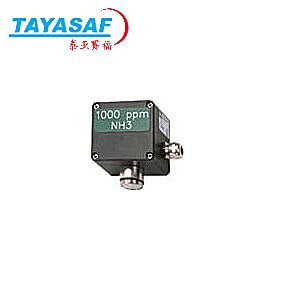
cs21可燃气体变送器
| 订货号: | MM-41161-00 |
| 产地: | 德国 |
| 品牌: | |
| 开发编号: | N |
| 市场价: | ¥ |
| *此产品根据配置不同价格不同 |
| *此价格为参考价格,具体价格以订单合同为准 |
- 我在现场:
- 产品视频:

- 产品描述
- 技术参数
- 技术文档
- 相关产品
- 明细价格
- 购买流程
产品描述:
For toxic and flammable gases and vapours
The transmitter CS21 uses the proven chemosorption principle for detection of toxic and combustible gases and vapours. The extremely short response time of the transmitter enables the user to take action quickly to prevent damage to people and plant. Long sensor life makes the CS21 an economic alternative.
The sensor can often be used continuously for 5 years, before replacement is required. A wide temperature range from -40°C to + 60 °C makes the CS21 useful for a variety of applications, particularly for the protection of refrigeration plants.
The distance between the CS21 transmitter and controller can be more than 500 metres. A sturdy aluminium housing protects the sensor and electronic parts against impact, splash-water and dirt.
The CS21 is not Ex-certified, so may not be used directly in areas containing highly flammable gases. To detect flammable gases and vapours within the zoned area the gas must be advanced to the transmitter. Here, explosion protection must be guaranteed with suitable components, e.g. flame arrestors.
Advantages at a glance
The sensor can often be used continuously for 5 years, before replacement is required. A wide temperature range from -40°C to + 60 °C makes the CS21 useful for a variety of applications, particularly for the protection of refrigeration plants.
The distance between the CS21 transmitter and controller can be more than 500 metres. A sturdy aluminium housing protects the sensor and electronic parts against impact, splash-water and dirt.
For toxic and flammable gases and vapours
The transmitter CS21 uses the proven chemosorption principle for detection of toxic and combustible gases and vapours. The extremely short response time of the transmitter enables the user to take action quickly to prevent damage to people and plant. Long sensor life makes the CS21 an economic alternative.
The sensor can often be used continuously for 5 years, before replacement is required. A wide temperature range from -40°C to + 60 °C makes the CS21 useful for a variety of applications, particularly for the protection of refrigeration plants.
The distance between the CS21 transmitter and controller can be more than 500 metres. A sturdy aluminium housing protects the sensor and electronic parts against impact, splash-water and dirt.
The CS21 is not Ex-certified, so may not be used directly in areas containing highly flammable gases. To detect flammable gases and vapours within the zoned area the gas must be advanced to the transmitter. Here, explosion protection must be guaranteed with suitable components, e.g. flame arrestors.
Advantages at a glance
The sensor can often be used continuously for 5 years, before replacement is required. A wide temperature range from -40°C to + 60 °C makes the CS21 useful for a variety of applications, particularly for the protection of refrigeration plants.
The distance between the CS21 transmitter and controller can be more than 500 metres. A sturdy aluminium housing protects the sensor and electronic parts against impact, splash-water and dirt.
The CS21 is not Ex-certified, so may not be used directly in areas containing highly flammable gases. To detect flammable gases and vapours within the zoned area the gas must be advanced to the transmitter. Here, explosion protection must be guaranteed with suitable components, e.g. flame arrestors.
Advantages at a glance
Economical
Simple to use
Long sensor lifetime
Low cost of ownership
Fast response time and high sensitivity
For use in areas where Ex-certification is not required
The CS21 is not Ex-certified, so may not be used directly in areas containing highly flammable gases. To detect flammable gases and vapours within the zoned area the gas must be advanced to the transmitter. Here, explosion protection must be guaranteed with suitable components, e.g. flame arrestors.
Advantages at a glance
Economical
Simple to use
Long sensor lifetime
Low cost of ownership
Fast response time and high sensitivity
For use in areas where Ex-certification is not required
技术参数:

泰亚赛福作为众多知名品牌的合作伙伴,优惠的价格+完善的售后服务体系向您提供产品。font>

泰亚赛福作为众多知名品牌的合作伙伴,优惠的价格+完善的售后服务体系向您提供产品。font>
技术文档:

泰亚赛福作为众多知名品牌的合作伙伴,优惠的价格+完善的售后服务体系向您提供产品。font>
- 在线浏览:
- 文档下载:

泰亚赛福作为众多知名品牌的合作伙伴,优惠的价格+完善的售后服务体系向您提供产品。font>
相关产品:

泰亚赛福作为众多知名品牌的合作伙伴,优惠的价格+完善的售后服务体系向您提供产品。font>
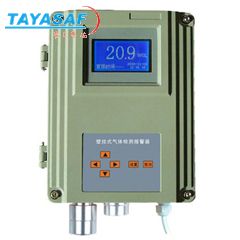 GTB20单点壁挂式EX检测报警仪订货号:MM-08740-00
GTB20单点壁挂式EX检测报警仪订货号:MM-08740-00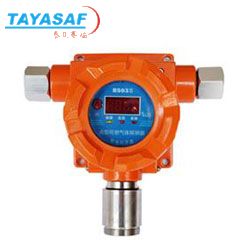 BS60R可燃气体探测器订货号:MM-08772-00
BS60R可燃气体探测器订货号:MM-08772-00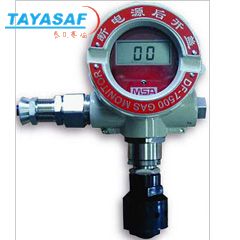 DF-7500气体探测器订货号:MM-08349-00
DF-7500气体探测器订货号:MM-08349-00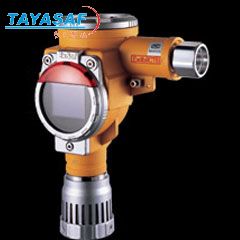 ESD3000可燃气变送器订货号:MM-12318-00
ESD3000可燃气变送器订货号:MM-12318-00 MIC-500-C-A瓦斯检测报警仪订货号:MM-07838-00
MIC-500-C-A瓦斯检测报警仪订货号:MM-07838-00 MIC-500-C2H2-A 乙炔检测报警仪订货号:MM-07856-00
MIC-500-C2H2-A 乙炔检测报警仪订货号:MM-07856-00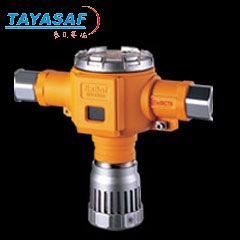 ESD500点型可燃气体探测器订货号:MM-12356-00
ESD500点型可燃气体探测器订货号:MM-12356-00 8020-C可燃气体探测器订货号:MM-00435-00
8020-C可燃气体探测器订货号:MM-00435-00 DF-7500可燃气体气体探测器订货号:MM-08350-00
DF-7500可燃气体气体探测器订货号:MM-08350-00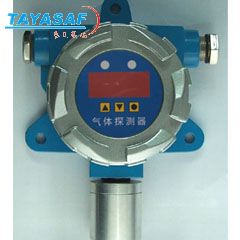 GT200智能型可燃气体检测探头订货号:MM-09117-00
GT200智能型可燃气体检测探头订货号:MM-09117-00
SP-1102可燃气体检测仪订货号:TA-00289-00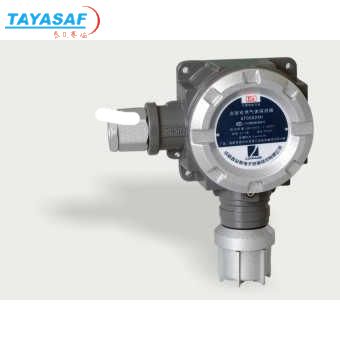 AT0502AH点型可燃气体探测器订货号:MM-81033-00
AT0502AH点型可燃气体探测器订货号:MM-81033-00

泰亚赛福作为众多知名品牌的合作伙伴,优惠的价格+完善的售后服务体系向您提供产品。font>
明细价格:

泰亚赛福作为众多知名品牌的合作伙伴,优惠的价格+完善的售后服务体系向您提供产品。font>
| 定货号 | 产品名称 | 规格配置 / 简介 | 市场价/(会员价) |
|---|---|---|---|
| MM-41161-00 | cs21可燃气体变送器 | /() |

泰亚赛福作为众多知名品牌的合作伙伴,优惠的价格+完善的售后服务体系向您提供产品。font>
购买流程:

泰亚赛福作为众多知名品牌的合作伙伴,优惠的价格+完善的售后服务体系向您提供产品。font>
①购买产品:点击“生成订单”→填写产品数量、联系方式并提交→会员顾问订单处理→合同签订。
②咨询产品:请联系会员顾问或致电会员客服电话。
③如果您还不是我们的会员,请先注册。
④最小起订数量:1
注意:本产品唯一个人现金委托收款人,如汇入其它个人账户本公司不承担任何责任
维护担当:
上线时间:
投诉电话:13801126385 13911302309
②咨询产品:请联系会员顾问或致电会员客服电话。
③如果您还不是我们的会员,请先注册。
④最小起订数量:1
注意:本产品唯一个人现金委托收款人,如汇入其它个人账户本公司不承担任何责任
维护担当:
上线时间:
投诉电话:13801126385 13911302309
联系方式
电话北京:400-000-1836 分机 或拨0转总机
上海:021-54248686 分机840 / 211 或拨0转总机
上海:021-54248686 分机840 / 211 或拨0转总机
传真北京:010-84852750/84854139
上海:021-64418200
上海:021-64418200

泰亚赛福作为众多知名品牌的合作伙伴,优惠的价格+完善的售后服务体系向您提供产品。font>
品牌简介
德国GFG公司成立于1961年,是生产便携式气体探测设备的企业。其产品主要有: 单一气体便携式探测器、采矿业用带报警功能多合一便携式气体探测器、气体探测器、控制卡、点式或…德国GFG公司成立于1961年,是生产便携式气体探测设备的企业。其产品主要有: 单一气体便携式探测器、采矿业用带报警功能多合一便携式气体探测器、气体探测器、控制卡、点式或开路式红外气体探测器及带有气体探测报警器的矿灯。我公司为德国GFG公司的中国北方销售平台,为其产品提供了良好的平台,以信得过的质量和优质的服务在业界称道。凭借价格低,质量好,到货快而多年来一直深受客户的好评。我们拥有完善的销售和服务网络,在全国拥有多家分公司和战略合作伙伴,欢迎前来选购!
您最近浏览的商品












 德国GFG
德国GFG



